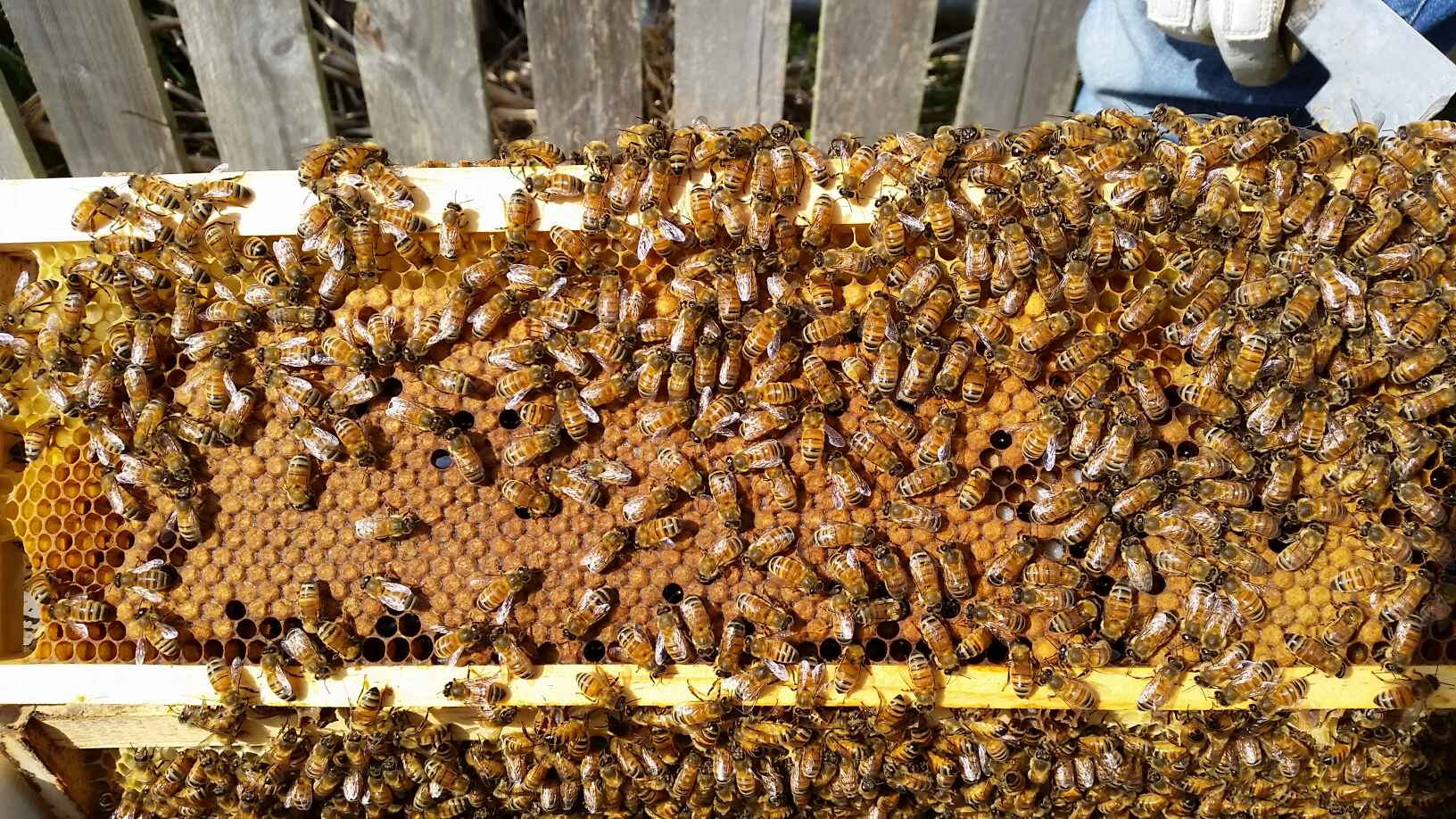Natural Beekeeping in Langstroths
/Natural comb often drawing drone comb first
How do I practice Natural Beekeeping in Langstroths?
It is certainly possible to apply natural principles to this hive. Natural Beekeeping for me is about providing the best environment for bees to behave naturally and be in a healthy state to resist disease with no intervention. Its the ideal, I know, however there is much we can do in small ways that will contribute to reversing the decline in our bees.
Bees have highly attuned senses that can be disrupted by many things - chemicals, pesticides, fertilisers, fermentation (poorly managed compost heaps) and the disturbances of beekeepers. They are complex organisms with over 8000 microrganisms that assist them in their survival. As well, they become highly intergrated with their environment. Over a year they learn landmarks, the location of resins for propolis, flora species and water, and these are continually communicated in the colony and kept as an organisational memory.
To this end I avoid all strong smelling substances, treatment and synthetic substances especially paint, boiled linseed oil, glues, sugar syrups, essential oils, organic acids, and plastics. These substances impact on communication, immunity, navigation and many other areas of bee behaviour and productivity. Glues are quite unnecessary. If boxes are well screwed or nailed they will hold the joint as well as glue and the bees will glue up any gaps with propolis. Many synthetic glues have formaldehyde in them so are very toxic to bees. Frames are better left unglued making it easy to replace a failed part. 'Super-strong' frames are only needed where extractors are used or in commercial apiaries.
And plastic frames outgas the same as paint. Even food grade plastics outgas so these toxins enter the honey and wax, and then contaminate the bees and us. Where possible I keep all plastics out of hives and avoid all forms of polystyrenes and soft plastics which outgas faster. Hives are hot places so the toxins increase in the warmer conditions. I no longer paint the inside of boxes and only paint the outside where I am using radiata pine as it is such a poor timber for outdoor conditions. Where I have used paint on the outside I like them to harden up for two months before using them. Never use treated timber in hives.
Where possible I am now avoiding wire and foundation. Stainless steel wire often puts the bees off from laying larvae along the wire and latest research is showing a higher iron level in larvae close to the wire. Increasingly I am using side pins to hold foundation where I use it. This keeps the metals well away from the brood area.
Langstroths are a hive that need management, so when we introduce foundationless, unwired frames, I often do so between already drawn frames. This helps keep the comb from heading in all sorts of odd directions. As these foundationless frames are filled, I then replace the old drawn frames with foundationless and the other frames act as a guide. Care is needed with fresh drawn wireless frames as they are soft and can break off easily if held sideways rather than standing upright however there is a knack to this that will come with care.
Often in Tasmania a vinyl inner cover is used to keep the moisture off the combs and reduce burr comb buildup in the lid. Where possible I use either canvas or a thin wood cover for this. Increasingly I am using a quilting system instead of the inner cover. The quilting system is borrowed from the warre hive design and is excellent for reducing moisture build up in hives as it traps it all in the shredded paper or wood shavings in the top.
If all this is too much trouble then the warre hive is a great solution!
Happy beeking!


